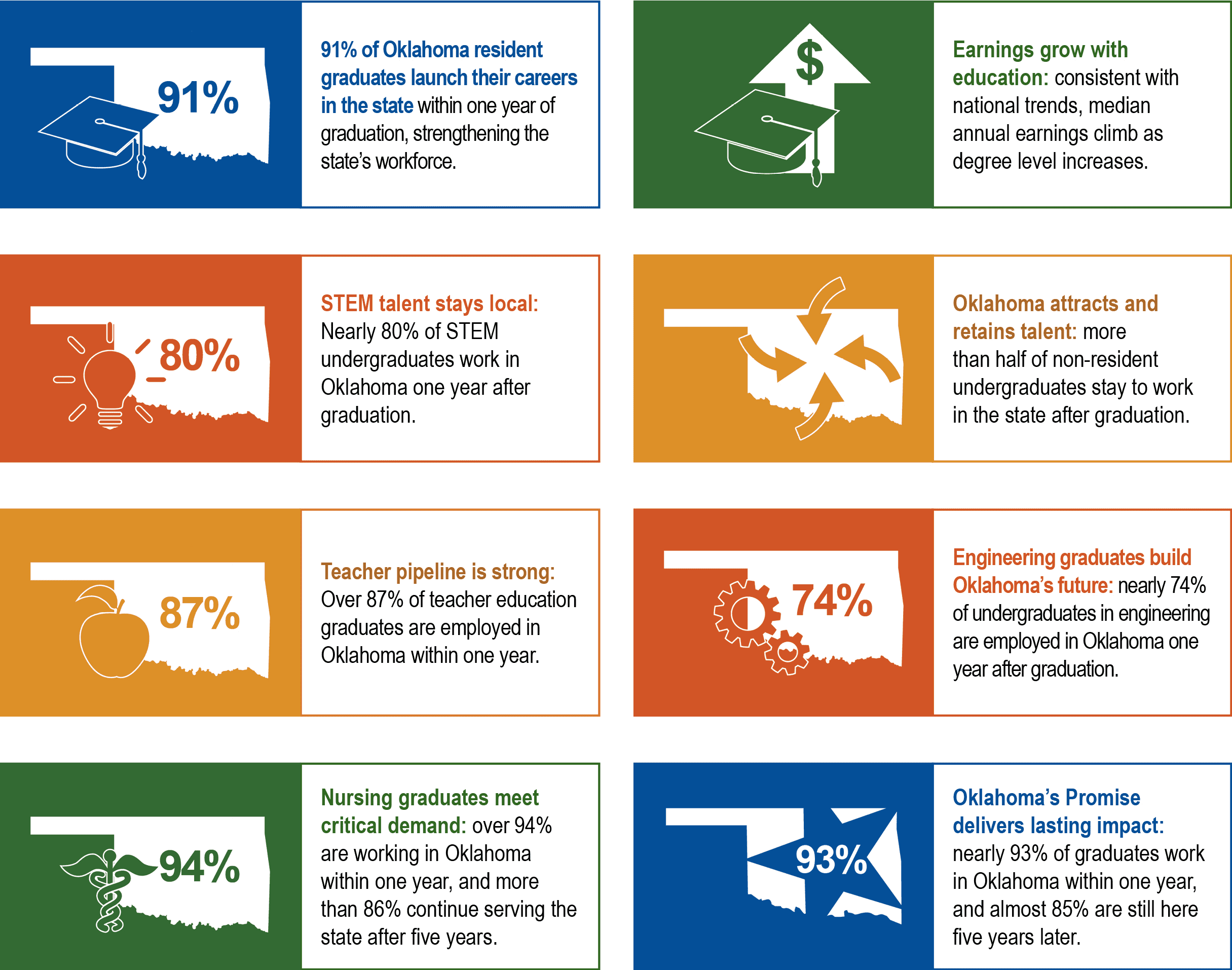The employment outcomes data is generated through a records match between the State Regents, the Oklahoma Employment Security Commission (OESC) and the Oklahoma Tax Commission (OTC). This data is used to determine the percentage of state system graduates who remain and are employed in the state one year and five years after graduation (2022-23 and 2018-19, respectively).
Graduate records are divided into two groups: (1) Oklahoma residents and (2) non-Oklahoma residents. Graduates are identified as Oklahoma residents if Oklahoma is the original state of residence when entering an Oklahoma higher education institution. If the original state of residence at enrollment is anything other than Oklahoma, the graduate is considered a non-Oklahoma resident.
The OESC database does not reflect the self-employed, employees of the federal government (e.g., military and postal service) and graduates working outside of Oklahoma. Additionally, the data does not include graduates who may have transitioned to graduate school, another positive outcome post-graduation. The OTC database includes couples filing joint returns; therefore, employment of the degree recipient is assumed, but may be that of a spouse.
The majority of Oklahoma’s state system graduates remain in the state, contributing to the state’s economy and opportunities for growth, even five years after graduation.
2024 Employment Outcomes Report (PDF, 1m)
Employment Outcomes
Employment outcomes dashboards provide data on the percentage of state system graduates who remain and are employed in the state one year and five years after graduation (2022-23 and 2018-19, respectively).

